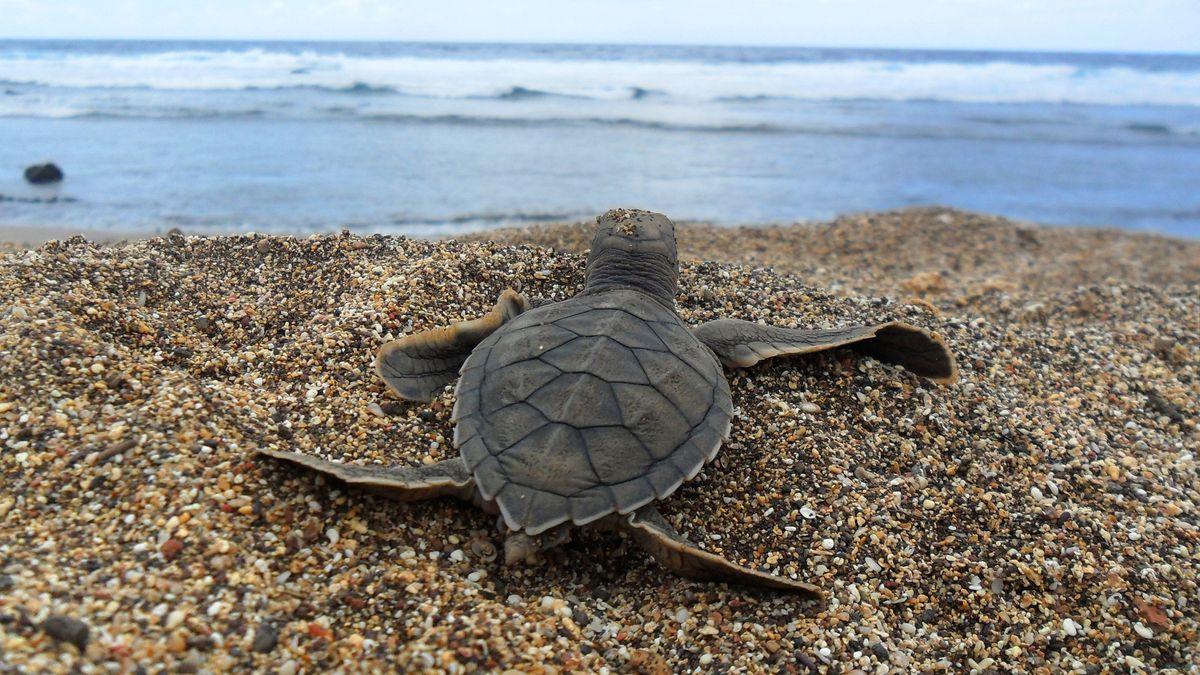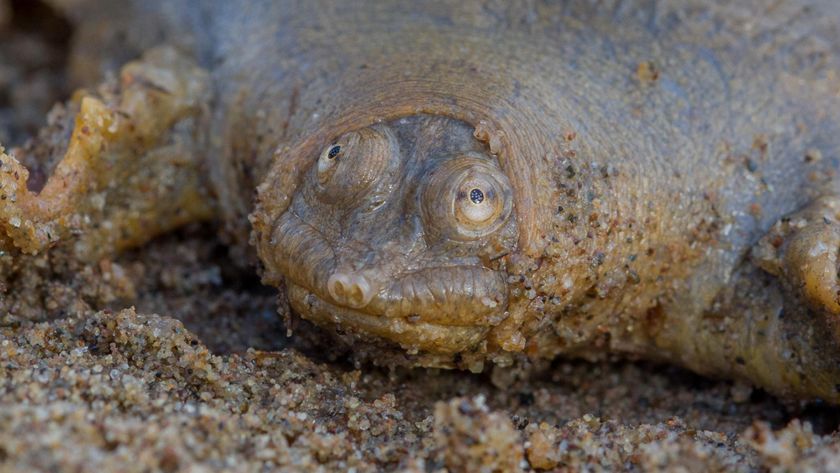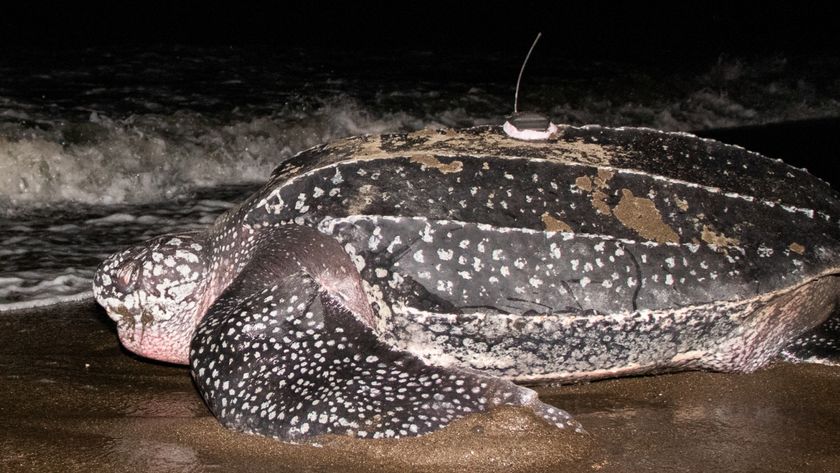Baby Turtles Mysteriously Dying on Australian Island

There may be such a thing as too many turtles, according to scientists investigating why so few turtle eggs were hatching on Raine Island, located on the tip of Australiaꞌs Great Barrier Reef.
For more than 1,000 years, green sea turtles have nested on Raine Island, where they dig pits to lay and bury their developing eggs. Yet after a millennia of fruitful nesting seasons, the island has recently had a drop in the rate of successful hatches — now less than 30 percent, even in undisturbed nests.
With protective coral along the broad sandy beaches, and no land-based predators, scientists were stumped as to why an otherwise ideal nesting location would have so few baby turtles hatching from eggs and scuttling down to the water. [Photos: Thousands of Baby Turtles Hatch in Brazil]
Seawater was the first suspect. Scientists thought flooding of the nests during high tides was killing newly laid eggs, which cannot survive underwater. Sand was added to a section of the beach in 2014, raising it by 3 to 5 feet (1 to 1.5 meters), but hatching rates were still extremely low. Then in 2015, hatching success doubled, leaving scientists to question what had changed.
A new theory from researcher David Booth of the University of Queensland suggests that the island's popularity for nesting is to blame for the plunge in hatching success.
Fewer turtles laid nests on the island in 2015, Booth said in a statement. That bit of information suggested that "a density-depending effect was limiting hatching rates even in nests that remained undisturbed throughout incubation, rather than the environmental conditions."
The Queensland Department of Environment and Heritage Protection estimates as many as 60,000 female green turtles swim from their feeding grounds in Indonesia, Papua New Guinea, the Torres Strait and the West Pacific to the tiny Raine Island to lay their eggs.
Sign up for the Live Science daily newsletter now
Get the world’s most fascinating discoveries delivered straight to your inbox.
The number of turtles to visit the island each nesting season is highly variable, Booth told Live Science, "with as few as 5,000 in a very low nesting year." An estimated 15,000 females visited the island in the 2014-2015 nesting year, while only 5,000 did so in 2015-2016.
With a high number of nests, nutrients and oxygen beneath the sand could be used more quickly. Nest density could also increase the levels of bacteria in the nests, the researchers said.
"Because the nests generally remain undisturbed by other nesting turtles, the most likely explanation is low oxygen or high carbon-dioxide levels, or an increase in disease-causing microorganisms," Booth said.
To test his theory, Booth will investigate whether pumping air into the nests will boost the hatching rate. If correct, nesting density could explain a similar phenomenon of low hatching rates in other turtle populations, such as Olive Ridley turtles, he said.
The hypothesis is scheduled to be presented at the annual meeting for the Society for Experimental Biology today (July 7) in Brighton, England, and has yet to be published in a scientific journal.
Original article on Live Science.
Editor's Note: This article was updated to include information on why turtle nesting varies from year to year.












